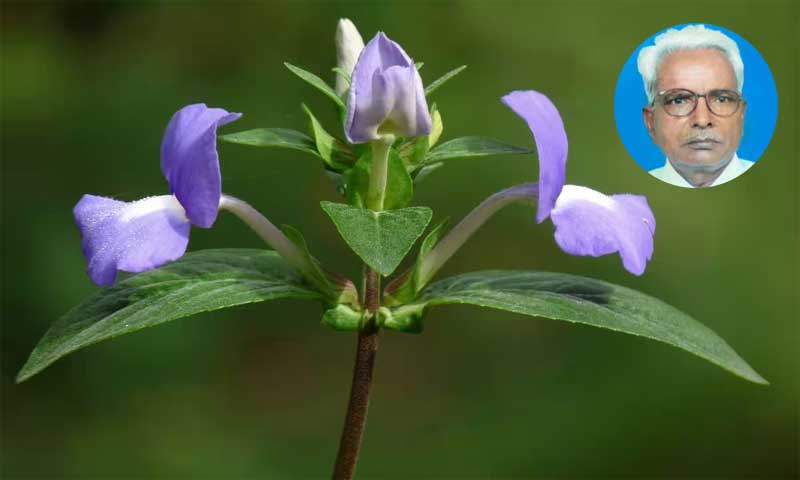

A team of scientists from the Forest Pathology Department of the KSCSTE–Kerala Forest Research Institute (KFRI) has discovered a novel phytopathogenic fungus affecting the ornamental plant Matourea azurea, commonly known as Amazon Blue. This fungus, named Paramyrothecium kamalii, causes foliar diseases such as leaf spots and blights, which diminish the plant’s aesthetic and commercial value.
Amazon Blue (Matourea azurea), native to Southeast Brazil, was introduced to India for its visually striking blue flowers and fragrant leaves, which are widely used in the perfume, cosmetics, and food industries. The plant also holds medicinal relevance, as its essential oils demonstrate antidermatophytic properties effective against fungi causing dermatomycosis. However, its cultivation is threatened by emerging foliar pathogens, warranting focused surveillance.
The research team, comprising Shambhu Kumar, Farsana K.B., and Mufeeda K.T., identified the fungus through a combination of morpho-cultural observations, pathogenicity testing, and multigene molecular phylogenetic analysis. Their findings, recently published in the journal Archives of Microbiology, add a new entry to the taxonomy of fungal pathogens affecting ornamental plants in tropical regions.
The newly identified species was named Paramyrothecium kamalii in honour of Professor Kamal, former Head of the Department of Botany at Deen Dayal Upadhyaya University, Gorakhpur, recognising his significant contributions to the field of fungal taxonomy.
The infected Amazon Blue plants exhibited small necrotic lesions on the leaves, which progressively developed into severe blight symptoms under humid environmental conditions, commonly present in the Western Ghats. According to senior scientist Shambhu Kumar, these climatic conditions are highly favourable for the proliferation of both pathogenic and non-pathogenic fungi. The emergence of P. kamalii highlights the crucial importance of ongoing mycological surveys in monitoring and managing emerging plant diseases, particularly in ecologically sensitive and biodiversity-rich areas like Kerala.
The researchers stress the need for integrated disease management strategies to mitigate the damage caused by this pathogen. They recommend early pruning and removal of infected foliage during the initial stages of infection. Additionally, they point to the availability of specific biological control agents in the market that can effectively suppress the disease, with fungicides serving as a potent solution in severe outbreaks. Ensuring the health of Amazon Blue is not only essential for ecological preservation but also for safeguarding its role in floriculture and its economic utility in fragrance and flavour industries.
This discovery marks a significant step forward in understanding fungal biodiversity in India. It highlights the delicate balance required when introducing exotic plant species into new ecological settings. The findings also call for proactive disease surveillance and predictive modelling to support sustainable cultivation practices.
Published on: Thursday, February 6, 2025